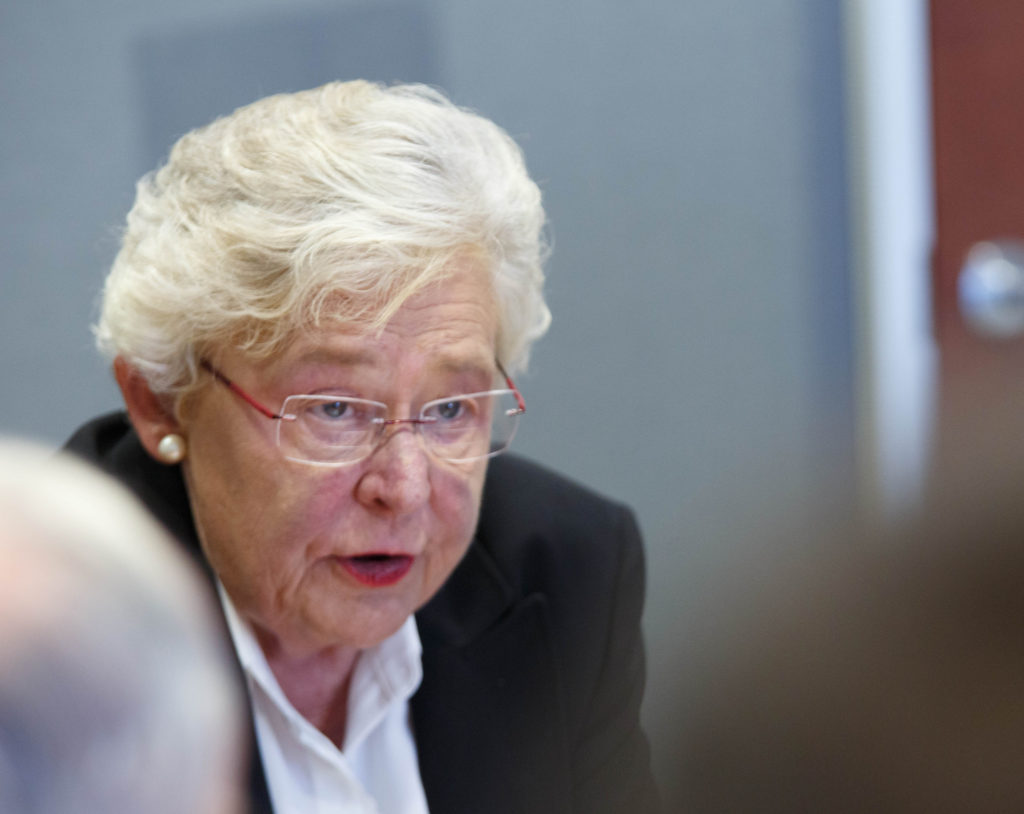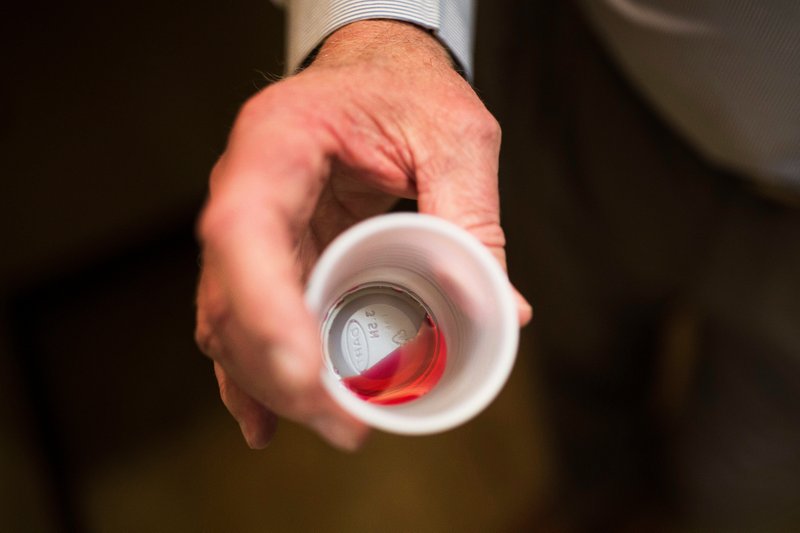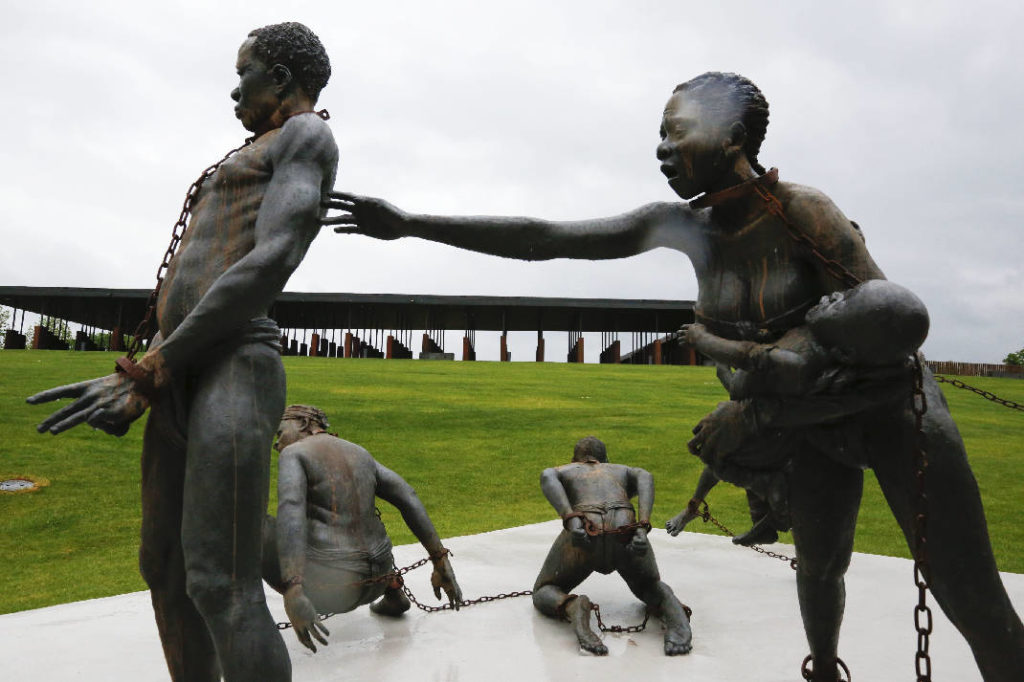How the media, BLM activists are pushing false narrative of Chikesia Clemons arrest and why we shouldn’t let them

Law enforcement officers haves a tough jobs these days. Just last week two deputies in Florida were ambushed, shot and killed while simply having a meal together. While the Sunshine State, and the nation, mourns their unnecessary deaths, we also need to stop and recognize the danger our law enforcement faces these days extends beyond just that of violence. It’s also the threat of mistruths and outright lies by those who would discredit the career field as a whole. This week Alabama has found itself in the spotlight for an incident at a Waffle House where an edited portion of a video taken of Chikesia Clemons being arrested went viral. Quickly Black Lives Matter, and others, took to social media to scream that the arrested woman was mistreated. The woman’s mother and friends are also pushing their own false narrative of the situation to anyone who will listen. A full copy of the video of the incident made available to press later showed Clemons and friends being asked to leave multiple times. Her version, and that of her friend who released the edited tape, of events are completely different than those from multiple witnesses including other black women, and women in the restaurant. A full report indicates that witnesses, who included six employees and one customer, told police that the two women were loud and used profanities toward employees. The fact remains that Clemons isn’t a victim of anything but her own bad behavior and poor decisions. Al.Com reported according to the video and witnesses, these were the words of the woman Black Lives Matters and others are wrongly trying to call a “victim”: “I’ll come over this counter and beat your f**king ass, bitch I’m gonna have your job, you ain’t gonna be here tomorrow.” This is according to witness statements read by Det. Mims Another witness said that one of the two women said they could come back to the store and “shoot this place up if I need to.” So to be clear: A drunk woman walks into a restaurant holding alcohol, is told she can’t have it and asked to leave. She leaves, then returns shouting and threatening people. At one point on the video she is seen standing on a chair while screaming. She called the restaurant obscene employees names. She threatened to shoot them. Officers come in and ask her to leave and she refuse. Then, on video, she resists arrest and when the officer warns her that her resisting could lead to her breaking her arm she’s a victim? Only if you live in a world where you have no idea what victimhood actually is or looks like, is Clemons an actual “victim”. Yes, her dress came down. That’s not the police officers’ fault. Had she not resisted arrest, it wouldn’t have happened. The officers ask her friend to fix it as soon as they have the situation under control. Wardrobe malfunctions can be a terrible side effect of a lawful arrest. In the future maybe the woman shouldn’t have behaved the way she did to warrant an arrest, or perhaps she shouldn’t have rolled around and tried to stop the officers from cuffing her — then she wouldn’t have had to worry about the wardrobe problems. Just a thought on the complaints about her dress coming down. Facts don’t matter to some (read in this case: many) these days. The woman has already raised over $12,000 on a GoFund me page that inaccurately sums up the incident. That’s $12,000 that could go to so many kids and causes that need it, but instead it will go to a woman whose violent tirade has gone viral with a misinformation campaign aimed at discrediting cops who were simply doing their job. One author on The Cut asks, “Who will stand up for Chikesa Clemons?” The author starts out saying, “While watching the video of 25-year-old Chikesia Clemons at a Waffle House in Saraland, Alabama, I realized Chikesia could have easily been me, my friends, or my cousins.” Well Brittney Packnett if you and your cousins trespass, threaten violence and resist arrest, then yes, this too could happen to you. Because those are the reasons this happened to Clemons. Not her race. Her actions. Period. An important fact to keep in mind is this incident happened the same day — Sunday morning — as the shooting at a Waffle House in Tennessee that killed four. So here we have a drunk woman saying she could come back and shoot up the place and officers and employees were suppose to do what? Just ignore her? That sounds ridiculous. We are living in time in which law enforcement officers have to worry about being called racist or sexist, just because they are doing their jobs. Sometimes the facts reveal actual bias was an issue. Sometimes the facts show that the cops did the right thing. How anyone can look at Clemons’ video, read the witness testimony, and still see this as anything but another drunk person arrested for their own dumb choices is beyond me. But to the cops who are getting very little support I say, the facts are on your side. Stay safe men (and women) in blue. Thank you for all you do.
Wetumpka TEA party straw poll results

After a large turnout at the Wetumpka TEA Party’s event on Monday night, the straw poll results are in. Advertised as a “meet and greet,” the event allowed Alabamians to meet each candidate individually and ask them questions about the position they are seeking, rather than listen to speeches and debates. Over 40 candidates from offices across the state attended the event. Governor’s race The polls concluded that Scott Dawson is the favorite in the Republican governor’s race, remaining undefeated in grassroots straw polls thus far this election season. “Our winning track record in grassroots straw polls reflects the support I see every single day on the campaign trail,” Dawson said. “We’re bringing a vision for the future, hope for Alabama politics, conservative solutions, and an outsider option with the moxie to top the special interests and make Montgomery a place that serves the people again.” Lt. Governor’s race In the race for lieutenant governor, Rusty Glover took the top spot. “I am extremely pleased to see the results of this poll. It shows the momentum that is building for my campaign as a direct result of the hard work I’m putting in across our great state,” stated Glover. “For me, this race is about putting the people of Alabama first. As Lieutenant Governor, I will be a leader and listen to what is important to the people of our state.” Attorney General’s race Alice Martin won the straw poll for Attorney General by over 10 points. “Last night’s results clearly show that the momentum in this race is with my campaign and that we have strong grassroots support throughout the state,” said Martin. “Conservative organizations like the Wetumpka TEA Party have led the fight against big government policies and corruption here in Alabama and I am proud to have the support of a great majority of their members. Conservatives here in Alabama knows that if I am elected Attorney General, establishment politicians will no longer be allowed to enjoy business-as-usual in Montgomery and corrupt officials will be prosecuted to the fullest extent of the law.” State Auditor’s race In a landslide victory, Jim Zeigler won the poll for State Auditor. Other races John Merrill won the poll for Secretary of State by over 130 points, Rick Pate was the top choice for Commissioner of Agriculture and Industries, and John McMillan was the winner of the State Treasure’s poll, leading by nearly 120 points. The Wetumpka TEA Party stressed in a Facebook post on Tuesday the poll was not scientifically backed, or an endorsement for any particular candidates. It was for purely educational purposes.
Kay Ivey travels to Japan, meets with automakers

Gov. Kay Ivey departed for Japan Tuesday with a small team of Alabama economic development specialists on a business development mission. There, they’ll attend high-level meetings with executives of global automakers Toyota, Mazda and Honda with the strategic goal to facilitate growth in the state’s automotive sector and reinforce relationships with the manufacturers. The Alabama delegation will return Thursday following the appointments in Tokyo. “The auto industry has been a key driver of economic growth in Alabama for two decades, and we want to make sure we’re positioned to see that growth accelerate in coming years,” Ivey said. “It’s important that we work closely with these automakers to ensure they thrive in Alabama, because that will bring more jobs and investment to the state.” The Japan mission comes as the Mazda Toyota Manufacturing USA joint venture partnership is beginning to move forward with plans for a $1.6 billion assembly plant in Huntsville that will employ 4,000 people and spawn a significant network of suppliers. Greg Canfield, Secretary of the Alabama Department of Commerce, said the discussions with Mazda and Toyota executives will focus on moving the assembly plant project forward. In addition, the talks will center on how their supply chain can be filled leading up to a production launch in 2021. “While we have a longstanding relationship with Toyota, we’re still developing bonds with Mazda, which has no manufacturing presence in the U.S.,” Canfield said. “We can use our extensive experience in assisting automakers expand their footprint to help the company build out a productive and efficient operation in Alabama.” Joining Governor Ivey and Secretary Canfield in the meetings with Mazda and Toyota executives will be Huntsville Mayor Tommy Battle, Tennessee Valley Authority CEO Bill Johnson, and Chip Cherry, president and CEO of the Huntsville/Madison Chamber of Commerce. Steve Pelham, Governor Ivey’s Chief of Staff, and Hollie Pegg, Assistant Director of Business Development at the Alabama Department of Commerce, will also be included in these meetings. Honda Appointment The state team, minus the Huntsville representatives, will also engage in talks with leaders of Honda, which operates a $2.6 billion assembly plant in Talladega County with 4,500 full-time workers. In early 2017, Honda announced an $85 million expansion as part of a multi-phase project to improve manufacturing flexibility at the Alabama factory and prepare it for future technologies. Canfield said the meeting with Honda is meant to reinforce Alabama’s strong relationship with the automaker and discuss how the state can support the facility’s new leadership and future growth plans. “Honda is a very important member of the Alabama automotive manufacturing family, and we’re committed to working closely with this great company as it pursues new levels of success at its Talladega County operation,” he said. Meeting with Ambassador In addition, the Alabama group will visit the U.S. Embassy in Tokyo to meet with Ambassador Bill Hagerty for a discussion expected to center on the current business climate in Japan and unfolding trade developments affecting the two countries. “Ambassador Hagerty was one of the first people to call me and congratulate Alabama on attracting the Toyota-Mazda investment. This meeting shows the importance that Alabama plays on the world stage and I appreciate the work the Ambassador does on behalf of our nation,” Ivey continued. “I look forward to the meeting and to working with him to continue the strong relationship between Japan and Alabama.” Ivey says she hopes these meetings will lead to additional economic growth for Alabama and more trade between the state and Japan.
Gulf Shores school system to begin separation in 2019

The Gulf Shores School Board finally received a decision from Alabama State Superintendent Dr. Ed Richardson on its separation from the Baldwin County School System on Friday. Unfortunately for the Gulf Shores School Board, the decision was not one they had hoped for. In January, tensions rose as the Gulf Shores School Board and Baldwin County School Board met to discuss the school split. With Gulf Shores fighting for the school split to be completed by fall of 2018, and Baldwin County Schools believing fall 2019 a more realistic start date. In February, Baldwin County school officials announced they would no longer negotiate with Gulf Shores, and asked the state superintendent to intervene. Richardson made the decision for the schools to begin separation in 2019, seventy days after both boards made the request for Richardson to step in. Gulf Shores School Board president Kevin Corcoran says the board continued to make moves towards a 2018 start date while they waited over two months for the the state superintendents decision. To prove their commitment the board offered Huntsville school superintendent Matt Akin the superintendent’s position for their schools on Thursday but did not include and official start date. “Seventy days after requesting that Dr. Richardson intervene regarding the start date for Gulf Shores City Schools, we have received his ruling. Gulf Shores City Schools will be open for the 2019-20 school year. There was never a question of ‘if’ this transition would happen, but rather ‘when,’” said Corcoran in a statement. “We were and are fully prepared to become operational in 2018. It is our hope to finalize contract negotiations with Dr. Matt Akin next week. Regardless of the timeline, there is much work to be done.” Baldwin County school system Superintendent Eddie Tyler said the school system has always been focused on what was in the best interest of the students, teachers and families in regards to the split. He said they were pleased with Richardson’s decision. “With only one year to go, we will begin work towards the 2019 separation where we will wish Gulf Shores the best in their new system while also celebrating the opening of Baldwin County’s new state of the art facility for grades 7-12 in Orange Beach. We are confident that everyone will be well served by this decision from Dr. Richardson,” said Tyler in a statement.
Randall Woodfin takes unorthodox approach: ‘Give me me your gun… I’ll help you find a job’

Birmingham Mayor Randall Woodfin is taking an unorthodox approach to tackling his city’s crime problem. He’s telling residents that if they’re down on the luck and have a gun to turn it over to him, and he’ll personally help them find a job. “Give me your gun and I will personally help you get a job,” Woodfin said Saturday morning while speaking with members of the Birmingham Association of Black Journalists according to AL.com. Thus far in 2018, there have been 34 homicides within Birmingham’s city limits. Only five have been classified “justifiable,” which is perhaps the reason Woodfin is thinking outside of the box on how to curb crime in his city and offering to personally get involved in the solution. “We have a full breach of public safety in this community,” he continued. “If we don’t attack crime, nothing else matters.” But Woodfin doesn’t think he holds all the answers to the city’s problems — he says he’s also open to hearing suggestions from others. “There is an element in our city that doesn’t care about other people’s lives, Woodfin explained. “If any organization has a better way of stopping them than arresting them, show me. I will sit with them as long as needed… I’m willing to talk with any group, but they’ve got to be on the solutions end.”
Opioid treatment gap in Medicare: methadone clinics

One in three older Americans with Medicare drug coverage is prescribed opioid painkillers, but for those who develop a dangerous addiction there is one treatment Medicare won’t cover: methadone. Methadone is the oldest, and experts say, the most effective of the three approved medications used to treat opioid addiction. It eases cravings without an intense high, allowing patients to work with counselors to rebuild their lives. Federal money is flowing to states to open new methadone clinics through the 21st Century Cures Act, but despite the nation’s deepening opioid crisis, the Medicare drug program for the elderly covers methadone only when prescribed for pain. Joseph Purvis, a former heroin and prescription painkiller user, said he went into a depressive tailspin because he initially feared he might have to stop methadone treatment when he went on Medicare at 65. “I was terrified that I might have to leave the program. There’s no way I wanted to go back to addiction on the streets,” said Purvis, 66, of Gaithersburg, Maryland. Methadone doesn’t meet the requirement of Medicare’s Part D drug program because it can’t be dispensed in a retail pharmacy. Instead, in the highly regulated methadone system, patients first are assessed by a doctor, then show up daily at federally certified methadone clinics to take their doses of the pink liquid. Or, like Purvis in Maryland, they prove through repeated urine screens that they have earned the right to weekly take-home doses. In Congress, a Senate panel looking for ways to counter the opioid epidemic is considering allowing Medicare to cover methadone treatment. Legislation has been introduced in the House, and a White House commission on the opioid epidemic also recommended the change. The epidemic is “affecting all populations, including our seniors,” said Rep. George Holding, R-North Carolina, a sponsor of the House bill. “Medicare beneficiaries have among the highest and fastest growing rate of opioid use disorder, but they don’t currently have coverage for the most effective treatment.” An estimated 300,000 Medicare patients have been diagnosed with opioid addiction, and health officials estimate nearly 90,000 are at high risk for opioid misuse or overdose. Buprenorphine, a more expensive and slightly less regulated treatment drug, is covered by Medicare but few doctors who accept new Medicare patients have obtained federal waivers to prescribe it. A recent study of Medicare claims found prescriptions for buprenorphine for only 81,000 patients. More evidence that the crisis affects seniors: Opioid overdoses killed 1,354 Americans ages 65 and older in 2016, about 3 percent of the 42,000 opioid overdoses that year. Medicare’s policy means clinics often scramble to keep older patients in treatment if they’ve had commercial insurance that covered their care before turning 65, said counselor Angela Caldwell of Montgomery Recovery Services in Rockville, Maryland. A national organization for methadone clinics says the clinics now have 25,000 Medicare beneficiaries who are either paying out of pocket (about $80 per week) or getting care through state-run Medicaid or block grant programs. Mark Parrino, president of the American Association for the Treatment of Opioid Dependence, thinks more people would seek methadone treatment if Medicare covered it. Many older patients rely on surprisingly high doses of opioids for pain relief, which can turn into addiction, said Dr. Anna Lembke, an addiction specialist at Stanford University School of Medicine. One of her addiction patients, a woman in her mid-70s, was referred to her because her daily dose of opioids had climbed over the years to many times more potent than that of a typical heroin user, Lembke said. “She’s had a gradual development of tolerance over many decades and now is on an astronomical dose,” Lembke said. “If you took any random person and gave them (that much) they would die.” Lembke said she normally wouldn’t consider methadone for this patient because of the stigma associated with the clinics. But Medicare coverage might make them more acceptable, Lembke said, and her patient “might actually do better with methadone.” In Maryland, Purvis remained on methadone treatment because his income is low enough that he qualifies for the state-federal Medicaid insurance coverage for the poor and disabled. Medicaid covers methadone treatment in Maryland and about 35 other states. Purvis, who used heroin for more than a decade in his youth, later took opioids prescribed by specialists for back pain. After his pain doctor’s office was shut down for overprescribing, he started methadone treatment. “Some people think of methadone as a crutch for addiction but it’s not,” Purvis said. “It’s a tool that allows people to live a somewhat normal life.” Republished with the permission of the Associated Press.
Bill Hightower said 1,700 families generate 80 percent of crime in Mobile, but is that true?

During AL.com’s Reckon debate on April 18, Alabama State Senator and gubernatorial candidate Bill Hightower said that in Mobile approximately “1,700 families generate 80 percent of the crime.” But is this statistic correct? “The general idea that a few people are engaged in a lot of problem behavior and criminal behavior makes a lot of sense and would be consistent with what we see with a lot of other types of crime,” Adam Lankford, an associate professor of criminology and criminal justice at the University of Alabama told AL.com. And his statement holds up; according to one study conducted by the Centre for Ethics, Law and Mental Health in 2013, “a majority of violent crimes are perpetrated by a small number of persistent violent offenders.” A more recent study by the Crime Prevention Research Center also concluded that 2 percent of counties in the nation make up 52 percent of murders throughout the nation; Mobile county was included in that statistic. The thought process is consistent with data found by criminologists. However, according to Politifact, Hightower was basing his remark on research from the Mobile County district attorney’s office which found that, “of the 65,000 students in the district, only 1,500 students were responsible for 75 to 80 percent of serious school infractions. The district attorney then cross-referenced the students with home addresses to identify 1,200 households.” Hightower’s point is compatible with available data from several sources, but he failed to correctly describe it. Crime rates in Mobile have been significantly declining over the past ten years. In 2006, there were approximately 17,000 crimes compared to only 13,407 in 2014, but according to the Mobile Police Department, crimes in the first three months of 2017 and 2018 are trending higher than the first three months of 2015 and 2016. Although crime rates overall have been trending down, the county’s violent crime rate is on the rise. Mobile County experienced a total of 61 homicides in 2016, compared to 34 homicides in 2006; and when you compare the first three months of 2017 and 2018, the number of rapes in the county are on track to hit the 120 mark this year, compared to 89 in 2016.
NAACP slams Kay Ivey’s Confederate monuments campaign ad

The Alabama NAACP is taking a stand against Gov. Kay Ivey‘s most recent campaign ad highlighting her support of protecting the state’s Confederate monument. The group met at the capitol in Montgomery, Ala. Saturday afternoon to condemn the ad. “We’re upset about her using this campaign ad to attract voters to tell people why they should vote for her,” said Benard Simelton, the president of the Alabama NAACP, according to CNN. Silmelton believes there are a lot of other things Ivey could have made “the hallmark of her campaign.” “There are a lot of others things she could have made the hallmark of her campaign– education, our horrible criminal justice system. She could have talked about those things that are very, very important to the state of Alabama,” Simelton added. The ad in question was released by Ivey’s campaign last Tuesday as part of her election bid for a full-term as Governor. In the 30-second spot, Ivey says “when special interests wanted to tear down our historical monuments, I said no!” In response she signed a law to protect the monuments. The law, the Alabama Memorial Preservation Act, which preserves all historical monuments on public property that have been in place for at least 40 years, was passed in May 2017. Ivey’s campaign is defending the ad saying it “we shouldn’t … tear down history.” “Our ad highlights a law that was passed by the legislature and signed by the governor to protect all of our historical monuments. We can’t, and we shouldn’t change, erase or tear down history. We should learn from all of it,” the campaign said in a statement.
Lynching memorial will show that women were victims too

A memorial to victims of lynching in the U.S. opens in Alabama on April 26, 2018. The National Memorial for Peace and Justice is a six-acre site that overlooks Montgomery, the state capital. It uses sculpture, art and design to give visitors a sense of the terror of lynching as they walk through a memorial square with 800 six-foot steel columns that symbolize the victims. The names of thousands of victims are engraved on columns – one for each county in the United States where a lynching took place. In Alabama alone, a reported total of 275 lynchings took place between 1871 and 1920. U.S. history books and documentaries that tell the story of lynching in the U.S. have focused on black male victims, to the exclusion of women. But women, too, were lynched – and many raped beforehand. In my book “Gender and Lynching,” I sought to tell the stories of these women and why they have been left out. Between 1880 and 1930, close to 200 women were murdered by lynch mobs in the American South, according to historian Crystal Feimster. Will this new memorial give these murdered women their due in how the U.S. remembers and feels about our troubling history? Enforcing white supremacy through terror In a recent report, Lynching in America, researchers documented 4,075 lynchings of African-Americans that were committed by southern whites in Alabama, Arkansas, Florida, Georgia, Kentucky, Louisiana, Mississippi, North Carolina, South Carolina, Tennessee, Texas and Virginia between 1877 and 1950. Lynching differed from ordinary murder or assault. It was celebrated by members of the Ku Klux Klan as a spectacular event and drew large crowds of people who tortured victims, burned them alive and dismembered them. Lynching was a form of domestic terrorism that inflicted harm onto individuals and upon an entire race of people, with the purpose of instilling fear. It served to give dramatic warning that the ironclad system of white supremacy was not to be challenged by word, deed or even thought. The conventional approach to teaching the history of Jim Crow and lynching has focused almost exclusively on the black male victim. However, such an approach often simplifies and distorts a much more complex history. Not all victims were African-American men, and although allegations of African-American men raping white women were common, such allegations were not the leading motive for the lynchings. We know from the pioneering work of anti-lynching crusader Ida B. Wells-Barnett that African-American men, women and children were lynched for a range of alleged crimes and social infractions. The book “Trouble in Mind,” by Pulitzer Prize-winning historian Leon Litwack, provides a detailed account of the many accusations of petty theft, labor disputes, arson and murder that led to these lynchings. This fact requires a richer, more nuanced understanding of discrimination that is critical of racism and sexism at the same time. Martyrs such as Laura Nelson and Mary Turner experienced racial and sexual violence at the hands of vigilante lynch mobs because of their race and gender. Laura Nelson and Mary Turner In May 1911, Laura Nelson was lynched in Okemah, Oklahoma. Nelson allegedly shot a sheriff to protect her son. The officer had been searching her cabin for stolen goods as part of a meat-pilfering investigation. A mob seized Nelson along with her son, who was only 14 years old, and lynched them both. However, Nelson was first raped by several men. The bodies of Laura and her son were hung from a bridge for hundreds of people to see. The title of Mayhorn’s installation, “A Woman Was Lynched the Other Day,” refers to a banner the New York NAACP would unfurl from their Fifth Avenue office when news of another lynching surfaced. With white letters inscribed on a black background, it declared “A MAN WAS LYNCHED YESTERDAY” and became a rallying cry for justice. The violent murder of African-Americans was so accepted at the time that a postcard was made of Nelson’s lynching by George Henry Farnum, a photographer. Brooklyn-based artist Kim Mayhorn created in 1998 a multimedia installation that memorialized Nelson’s death. There’s an empty dress in Mayhorn’s installation that resembles the postcard of her lynching. The disembodied dress represents the void in the historical record and Mayhorn’s effort to redress the absence of Nelson. Seven years later, in May 1918, Mary Turner was eight months pregnant when a mob of several hundred men and women murdered her in Valdosta, Georgia. The Associated Press reported that she had made “unwise remarks” and “flew into a rage” about the lynching of her husband, insisting that she would press charges against the men responsible. Her death has since been recognized by local residents, students and faculty at Valdosta State University, first with a public ceremony that placed a cross at the lynching site and second with a historical marker in 2010. Nelson and Turner have often been depicted as tragic characters or “collateral victims” who supported and defended the males in their lives. Such deaths, however, were not incidental. They were essential to maintain white supremacy, as a form of punishment for defying the social order. Though women represent a minority of lynching victims, their stories challenge previous attempts to justify lynching as necessary to protect white women from black male rapists. Understanding lynching and the motives behind it requires including the stories of African-American women who were robbed of dignity, respect and bodily integrity by a weapon of terror. The violence against them was used to maintain a caste system that assigned inferior roles to African-American women and men alike. Redefining the ‘civil rights movement’ By including women in the historical narrative of lynching, the new memorial in Alabama reveals a more complete understanding of this devastating social practice. This memorial brings African-American women like Nelson and Turner to the fore as victims, and the weight of visual evidence on display at the memorial challenges the silence surrounding their deaths. The Equal Justice Initiative assists scholars, teachers and ordinary people in recognizing the roots of the civil rights movement that began long before the years 1954-68. The monument sheds light in an
Senators considering a delay for VA confirmation hearing

Senators were discussing plans to delay the confirmation hearing for President Donald Trump’s pick to be Veteran Affairs secretary over growing questions about the nominee’s ability to manage the government’s second-largest department. The hearing for Ronny Jackson, Trump’s White House doctor and a Navy rear admiral, was scheduled for Wednesday. “Some Republican colleagues have told me that they think the hearing should be postponed, which certainly deserves consideration,” said Sen. Richard Blumenthal, D-Conn., a member of the Senate Veterans Affairs Committee. “I think there may well be a need for more time, in fairness to Admiral Jackson, so he and the administration have an opportunity to answer these questions fully and fairly,” he said. Blumenthal declined to discuss why more time might be needed. White House and VA officials were also discussing a delay with key allies outside the administration A spokeswoman for Sen. Johnny Isakson, R-Ga., the committee’s chairman, did not return requests for comment. Trump selected Jackson to head the VA last month after firing former Obama administration official David Shulkin following an ethics scandal and mounting rebellion within the agency. But Jackson has since faced numerous questions from Republican and Democratic lawmakers as well as veterans groups about whether he has the experience to manage the massive department of 360,000 employees serving 9 million veterans. Sen. Mike Rounds, R-S.D., and a committee member, said Jackson’s small staff at the White House will be an issue as he prepares to lead the VA. “We’ve got 360,000 people there,” he said. “Are they going to manage the secretary or is the secretary going to manage the VA? That’s a good question to ask, and he needs to answer it. He needs to be the leader. A lot of folks want to be led and managed.” Rounds said the committee still needs more paperwork from the White House on Jackson before the nomination can go forward. Republished with the permission of the Associated Press.
Warden testifies in trial over prisons’ mental health care

In late February, Alabama prison inmate Billy Lee Thornton stepped onto his cell bed, put a shoe string around his neck and hung himself from the light fixture, according to an incident report written by a correctional officer who witnessed the incident. The correctional officer, who had been at the door of Thornton’s segregated cell talking with him about medication, immediately called for help. As two officers rushed into the cell at Holman Correctional Facility and reached for Thornton, the string broke and Thornton fell, hitting his head. Thornton was rushed to the hospital. Four days later he was taken off life support. U.S. District Judge Myron Thompson, who last year ruled that Alabama provides “horrendously inadequate” mental health care to state inmates, ordered a Monday hearing on the circumstances of Thornton’s death and the death of another inmate. Holman Warden Cynthia Stewart testified Monday in federal court that Thornton was placed on mental health observation but not a suicide watch after a previous attempt to kill himself. Thornton was on the prison’s mental health caseload and had already attempted to hang himself on Dec. 27, 2017. A mental health evaluation presented to the court described him as hearing voices that told him to kill himself. He was placed under mental health observation, not a suicide watch, and stayed in a crisis cell under more intense supervision until Jan. 4. The plaintiff’s attorney Maria Morris said there is no documentation to show that Thornton received a mental health check 30 days after his release from the crisis cell. The 30-day check is required under a January 2017 court order that outlines a plan to protect possibly suicidal prisoners. After receiving another mental health evaluation where he was again described as having suicidal thoughts, Thornton was placed in a crisis cell on Feb. 22. He was released one day later. Morris said no documents show he received another mental health check before his death. Stewart said she didn’t know at the time about Thornton’s first suicide attempt. Bob Horton, a spokesman for the Alabama Department of Corrections, wrote in an email that the department is continuing to “investigate and evaluate the circumstances surrounding the death of the inmate at the William C. Holman Correctional Facility.” “This evaluation will include a review of actions of our contracted mental health staff and our correctional staff and whether those actions complied with departmental policy as well as any outstanding directives from the federal court,” Horton wrote. The department said the incident was currently classified as an attempted suicide. “I think today showed the Department of Corrections continues to leave prisoners who have severe mental health needs and have shown signs of dramatic decompensation in segregation at risk of harms to themselves without proper monitoring or treatment,” Morris said. Thornton was 31 when he died. His sister Taneisha Head, 29, was present at Monday’s hearing. “We’re just here for the truth,” she said. She said he never had a history of mental illness. “I knew my brother. He was coming home,” she told The Associated Press. “I told him we can’t wait till he comes home, and we can ride around in my new car and listen to blues.” Republished with the permission of the Associated Press.
Dr. Jill Biden to visit Mobile, give Bishop State commencement speech

Dr. Jill Biden, wife of former Vice President Joe Biden, will deliver the commencement speech at Bishop State Community College’s upcoming graduation ceremony. On Thursday, May 10 at the Arthur R. Outlaw Mobile Convention Center, Dr. Biden will deliver the speech to the Mobile, Ala. school “I have long said that community colleges are America’s best kept secret,” explained Dr. Biden. “I believe we need to celebrate community colleges – and their students – for who they really are: innovative, inspiring and essential.” During her tenure as Second Lady, Dr. Biden and former President Barack Obama led the first-ever White House Summit on Community Colleges. She also completed a College to Career bus tour across five states to highlight innovative workforce partnerships that kick-start career training. She has visited over fifty community college campuses across America. “Dr. Jill Biden understands the impact community colleges have in providing postsecondary education opportunities in our country,” said Bishop State President Dr. Reginald Sykes. “As a community college instructor, she sees first-hand how our students’ lives are changed by the opportunities two-year colleges provide. We are honored and thrilled to have such a relatable speaker for this year’s commencement.” Dr. Biden is a full-time English instructor at a community college in Virginia. She earned a Bachelor of Arts and a Doctorate in Education from the University of Delaware, and has a Master of Education with a specialty in Reading from West Chester University and a Master of Arts degree in English from Villanova University. Bishop State Community College’s 2018 Spring Commencement will take place Thursday, May 10, 2018 at 6 p.m. at the Arthur R. Outlaw Mobile Convention Center.


